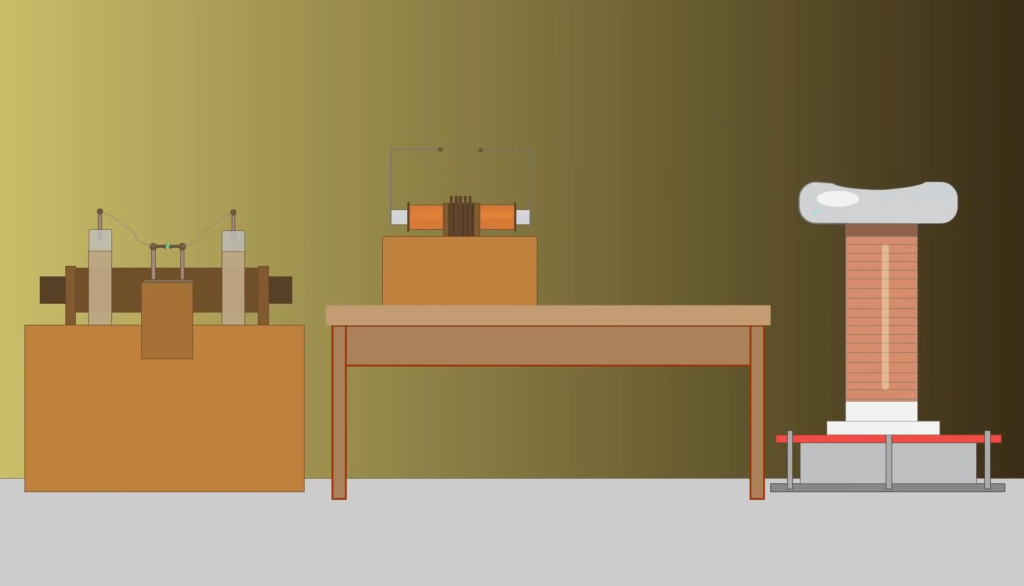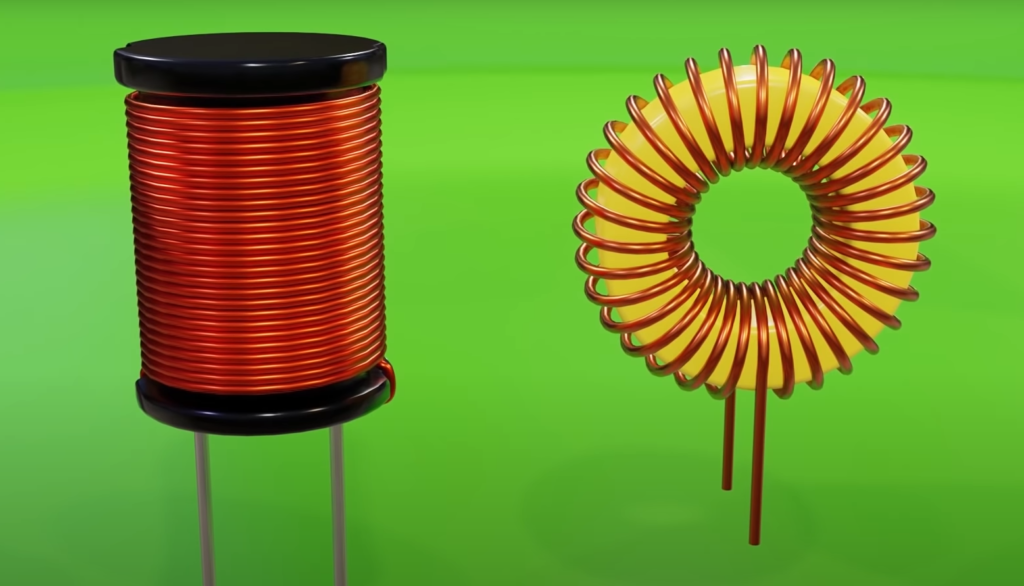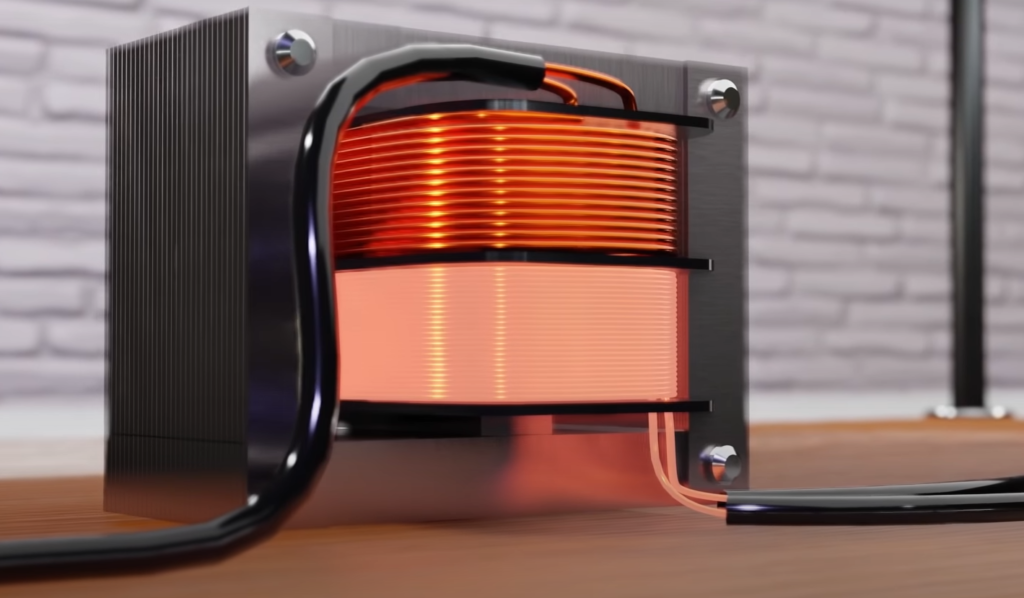Do you ever look around at the world and wonder how it all works? Human ingenuity has produced some truly amazing technology, including one of our favorite inventions: the Tesla coil. Nikola Tesla astounded the world in 1891 with his invention of the revolutionary Tesla Coil, an electrical resonant transformer circuit. It’s used to generate high-voltage electricity – sometimes as much as two million volts! This remarkable device has been featured in science fiction films; its invention even inspired a song from Metallica! So what exactly is a Tesla Coil, and how does it work? Keep reading to find out more about this incredible piece of engineering.
What is a Tesla Coil?
It is a primary component of his invention, the polyphase alternating current system. The Tesla Coil produces high-voltage, low-current electricity that can be used to power various types of equipment such as lamps, motors, and even loudspeakers. [1]

Resonance
Tesla coils use resonance to create a high voltage. When two currents of the same frequency meet, they combine and form a larger current. The voltage then builds up with each cycle until it reaches the desired level. This is how the Tesla coil produces power in such large quantities – by harnessing the power of resonance. In addition, Tesla coils are also used to generate other types of energy such as radio waves and microwaves. They can also be used to light up fluorescent lamps or drive motors. All these functions rely on one thing: resonance! So if you want to build something powerful, think about using a Tesla coil for your project!
Tesla coils have been around for more than a century now and are still being used today in multiple applications. They can be used for entertainment, like creating light shows or playing music, but their real purpose is to generate power in an efficient and safe way. Today’s Tesla coils are designed to increase efficiency even further, with higher frequencies and better insulation. So if you need something powerful and efficient, then the Tesla coil is the perfect choice!
Tesla Coil Parts & Construction
Tesla coils consist of two different circuits. The first is the primary circuit, which consists of a capacitor, spark gap, and primary coil. This is where the energy from the power supply is stored and transferred to the secondary circuit. The second part is the secondary circuit, which contains a high-voltage secondary coil and toroid (top load).
The primary winding of the Tesla Coil has relatively few turns compared to the secondary winding; typically being around 100 – 200 turns while the secondary winding can have thousands of turns. In between each winding are capacitors that help step up (or down) voltage levels in order to transfer energy efficiently throughout these different stages.
This combination creates an electromagnetic field with its own energy, allowing the Tesla Coil to generate high voltages at higher frequencies than those found in a normal power circuit. This EM field is what allows the Tesla Coil to produce sparks of electricity and create wireless power transmission.

Tesla Coils can be used for a number of practical applications as well. They can be used to transmit signals wirelessly, which has been used in audio systems, radios and even early television broadcasts. Additionally, they have also been used in medical research when it comes to treating certain diseases like arthritis, cancer and multiple sclerosis with electric currents. Finally, they are incredibly popular among hobbyists who use them for special effects or for scientific experiments related to radio waves and magnetism. [2]
Types of Coils
Tesla coils are categorized into two types: the spark gap Tesla coil (SGTC) and the resonant transformer Tesla coil (RTC).
The SGTC operates by periodically interrupting an electrical current, which creates a spark of electric charge across a small gap. This sparks jumps from one electrode to another, generating electric shockwaves that create oscillating currents in the secondary winding of the coil.
The RTC produces much higher voltage than an SGTC, as it is designed to resonate at frequencies beyond what can be achieved with a regular transformer. It uses capacitors to store energy and then discharges it quickly over a short period of time.
Both types of Tesla coils are capable of producing high-frequency electricity, but they have different applications. The SGTC is used primarily for small-scale electrical experiments, while the RTC is more suitable for industrial applications such as fluorescent lighting and radio transmission.
Despite their differences, both types of Tesla coils work by converting electrical energy into electromagnetic fields that produce sparks or electrical arcs. This makes them a useful tool in many scientific and engineering applications where high voltage electricity needs to be produced.
Tesla coils can be used to power light bulbs without any wires, create artificial lightning, detect objects hidden behind walls, and even generate pictures on plasma screens. With its versatile uses, the Tesla coil has become an important part of modern science and technology.
Solid State Tesla Coils
A solid state Tesla coil (SSTC) is a modern version of the original Tesla Coil, made with specialized components instead of bulky vacuum tubes. SSTCs are much more compact and efficient, providing many advantages over older versions. The primary components of an SSTC include a power supply, MOSFETs or IGBTs for switching, a capacitor bank for energy storage, spark gap electrodes for generating high-voltage sparks, and a secondary coil to produce the electrical arcs. Using these components in combination with advanced control circuitry allows an SSTC to generate multiple sparks simultaneously as well as provide adjustable output voltage.
Additionally, some models can even be synchronized with music or other audio signals through the use of special software. Solid State Tesla Coils are used in a variety of applications such as educational demonstrations, high-power physics experiments, and electrical engineering research. They can also be used to create stunning visual displays or to power electronic musical instruments. With their portability, efficiency, and versatility, SSTC remains one of the most popular forms of Tesla Coil technology today. [3]

Continuous Wave Mode
A Tesla Coil’s most common running mode is Continuous Wave (CW) Mode. In this operating condition, the top load produces a continuous stream of sparks and arcs. This running mode requires two separate power sources, one for the primary circuit and another for the secondary coil. The primary coil is driven with high voltage DC current which then energizes the toroid-shaped top load creating an oscillating magnetic field that induces a current in the secondary winding.
This process creates a stream of sparks on the top load that appear to be dancing from one electrode to another as they transfer energy from one coil to the other. In addition, due to its very low impedance design, this particular type of Tesla Coil can produce higher voltage with less input power than other types of high voltage transformers. This makes it an ideal choice for powering devices that require very high voltages but with low power consumption.
CW Mode is a great way to demonstrate the potential of Tesla Coils and show off their impressive sparks, arcs, and light shows. It can also be used to power some electronics such as plasma globes, X-ray machines, or even wireless lighting systems. With proper care and maintenance, CW Mode can ensure that your Tesla Coil performs at its best for years to come.
Interrupted Mode
The Tesla Coil operates in two modes, the “interrupt” mode and the “sustained” mode. The interrupt mode is used most often in applications such as wireless power transmission and radio broadcasting. In this mode, a capacitor is charged up to a high voltage level, then quickly discharged through an inductor or “primary” coil.
This creates a high-voltage spark gap across the primary coils which induces a strong oscillating current in them. This current is then coupled to secondary coils via electromagnetic induction; creating an even higher voltage output due to resonance effects within the transformer circuit. The resulting bursts of electric energy create streams of sparks that can be seen radiating from the top of the secondary coil. This process is then repeated over and over, creating an impressive display of sparks that can be seen for miles.
In addition to producing a light show, the Tesla Coil has been used for a variety of scientific research projects, such as studying the effects of extremely high-frequency electromagnetic fields on certain gasses and electrical conductors. It has also been used in medical applications to induce anesthesia or treat certain types of pain. [4]

Single Resonant Coils
Single resonant Tesla coils (SRTs) are the simplest and most common type of Tesla coil. They consist of a primary inductor, capacitor, spark gap and secondary coil with an elevated terminal on top. The primary coil is connected to an AC power source while the secondary coil has no electrical connection to the power source but is instead electrically coupled to the primary via magnetic fields.
When turned on, this setup creates a high voltage current that flows through an insulated output wire, creating a high-frequency alternating current in the secondary circuit. This alternating current induces a high voltage in the elevated terminal at the top of the secondary coil, forming a powerful arc or “spark” between the terminal and any nearby conductive object. SRTs can generate voltages as high as several million volts and can be used for a variety of applications, from wireless power transmission to particle acceleration.
Despite their simple design and operation, SRTs are capable of producing powerful sparks and require careful handling in order to prevent dangers such as electric shock or fire. In addition, the type of power source used to feed the primary coil can also affect the performance of an SRT — AC-powered coils generally offer better performance than those that use DC power sources. As such, it is important to understand how each component works in order to get the most out of your Tesla coil setup.
Class E Tesla Coils
Class E Tesla Coils operate at higher frequencies than traditional Tesla coils, allowing them to be used for more advanced applications such as wireless power transmission, plasma generation and medical treatments. Class E Tesla Coils also have increased safety features such as spark gap protection and current limiting capabilities. These make them ideal for use in laboratory experiments and other applications where high voltages are present.
With careful design and construction, Class E Tesla Coils can produce very powerful sparks which can be used for a variety of purposes including lighting effects or triggering other electrical components. [5]

FAQ
What does a Tesla coil do?
It consists of two parts: a primary coil and secondary coil, each with its own capacitor. When charged by a battery or other DC power supply, a spark gap across the secondary coil allows bursts of current to flow through the air between the coils creating an impressive electric arc. The arcs can be used for electrostatic experiments such as producing artificial lightning or wireless transmission of electrical power. They can also create interesting visuals for entertainment purposes.
How does a Tesla coil work?
Tesla coils use a principle known as mutual inductance to step up their voltage from that supplied by the battery or other primary power source. A transformer core is typically used to couple the two coils and help increase the efficiency of energy transfer. The primary coil converts electrical energy into a magnetic field which induces a voltage in the secondary coil. This secondary voltage can be tens or hundreds of times greater than that supplied by the power source. The spark gap across the secondary coil allows current from the primary to discharge through it, resulting in an arc.
What are some potential applications for Tesla coils?
Tesla coils have many practical and interesting uses including wireless power transfer, radio transmission, electrostatic motors and generators, plasma lamps, lightning displays, heating elements for industrial furnaces, medical treatments such as electrotherapy and Rife machines, high-voltage photography, robotics servos and actuators, and much more. They have also been used in computerized effects for movies and theatrical shows as well as interactive displays in museums and other settings.
Are Tesla coils safe?
Tesla coils can be dangerous if not handled with care. As they produce high voltage arcs, it is important to maintain a safe distance from the device when operating or observing it. It is also recommended that safety glasses are worn and that protective clothing such as rubber gloves are worn when handling components of the Tesla coil. If used properly, however, the risks associated with Tesla coils can be minimized.
What materials are needed to build a Tesla coil?
To build a basic Tesla coil, you will need some electronic components like resistors, capacitors, transistors, etc. as well as some mechanical parts such as wires, copper tubing and a spark gap assembly. You will also need some type of power source such as a battery or AC adapter to supply the necessary voltage. Additionally, you may need additional tools like soldering equipment and specialty items like an oscilloscope and waveform generator in order to optimize your Tesla coil’s performance.
Useful Video: Inventions: The Tesla Coil
Conclusion
The Tesla coil is a fascinating invention, with numerous applications in communication and entertainment. It has also been used to produce highly energetic sparks, which can be used to create complex plasma structures or generate X-rays. Its ability to convert electrical energy into radio frequency signals makes it one of the most important inventions of all time. Despite its many uses, its potential has yet to be fully realized, as engineers continue to find new ways to use this technology. As research continues, we are sure to see more exciting applications of the Tesla coil come forth in the near future.
In conclusion, the Tesla coil is an amazing piece of engineering that has both captivated audiences since it was first invented and provided us with invaluable tools for communication and entertainment. It has become an integral part of our modern day technology, and its remarkable capabilities are only beginning to be explored. With continued research and development, we have no doubt that this incredible device will continue to surprise us with new innovations and groundbreaking advancements in the years to come.
References
- https://wonders.physics.wisc.edu/tesla-coil/
- https://www.livescience.com/46745-how-tesla-coil-works.html
- https://arcattack.com/resources/how-a-tesla-coil-works/
- https://www.pbs.org/tesla/ins/lab_tescoil.html
- http://scipp.ucsc.edu/outreach/tesla/teslacoil/whatisateslacoil.html














Leave a Reply